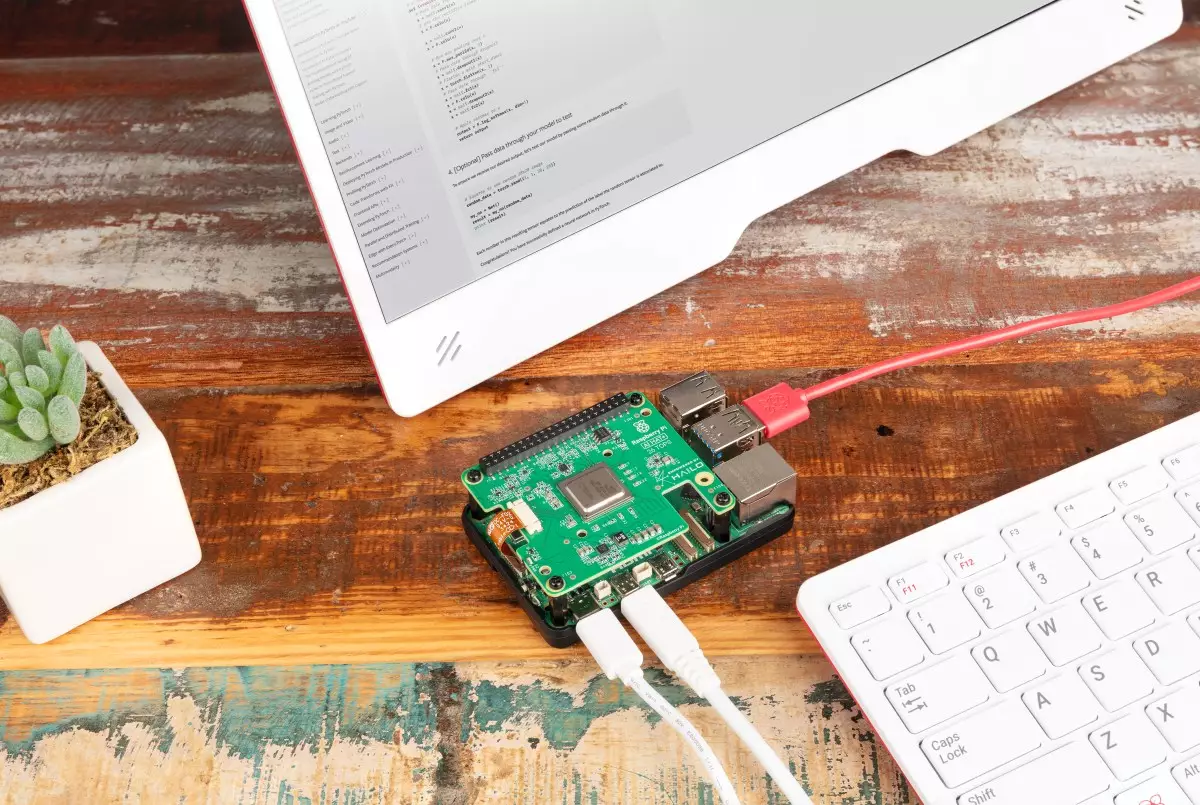Raspberry Pi’s recent surge in product releases reflects its commitment to enhance the versatility of its flagship model, the Raspberry Pi 5. Renowned for its inexpensive, compact computers, Raspberry Pi serves a diverse user base that spans from tech enthusiasts and educational institutions to industrial applications. Their latest endeavors aim to further bridge the gap between DIY projects and commercial utility, enabling users to leverage more advanced capabilities in computing, data processing, and artificial intelligence.
The Raspberry Pi 5 marks a significant step forward in single-board computing with its introduction of a PCIe 3.0 interface, presented through a 16-pin connector. This innovation opens doors to a variety of connections and peripherals that enhance the core functionality of the device. One of the primary challenges for users has been finding suitable expansions and storage solutions, and with the launch of M.2 HAT+ extension cards, this has become simpler. These extension cards convert the standard 16-pin connector to a traditional M.2 connector, showcasing Raspberry Pi’s understanding of user needs.
The term “HAT,” or “Hardware Attached on Top,” aptly describes the add-on nature of these devices, promoting a culture of modular and adaptable computing. The M.2 HAT+ serves as a bridge for users to incorporate NVMe SSDs, which are critical for tasks that require quick data access and storage. In the context of the growing demand for data processing speed and efficiency, this flexibility is indispensable.
As artificial intelligence becomes pervasive across various sectors, Raspberry Pi aims to democratize access to this transformative technology. In a strategic move to capitalize on this trend, the company has introduced the AI HAT+, an advanced extension card equipped with a neural network inference accelerator from Hailo. Available in two variants offering 13 and 26 tera-operations per second (TOPS), these boards underscore Raspberry Pi’s effort to provide powerful AI capabilities at an affordable price point.
While the Raspberry Pi might not compete with high-end computing platforms for machine learning training, the AI HAT+ enables effective inference at the edge—ideal for real-time, localized decision-making processes. This feature reduces latency and dependence on cloud infrastructure, which is particularly beneficial for applications requiring immediate feedback. The affordability of these components—retailing at $70 and $110—makes them particularly attractive to hobbyists and startups looking to integrate AI without a hefty investment.
Recognizing the necessity of robust storage solutions, Raspberry Pi has begun offering its own branded M.2 NVMe SSDs. With options of 256GB and 512GB priced at $30 and $45, respectively, these drives are designed to complement the Raspberry Pi 5’s capabilities efficiently. This line of products not only simplifies the purchasing process but also ensures compatibility, an often-overlooked consideration for many buyers.
Despite their appeal, it’s imperative to acknowledge that these SSD Kits—bundled with M.2 HAT+ connectors—do not radically alter the landscape of Raspberry Pi functionality. Rather, they solidify Raspberry Pi’s ecosystem, encouraging users to select compatible products that work seamlessly together. In an age where consumer electronics are abundant, such curated offerings stand out by providing simplicity and peace of mind.
As the Raspberry Pi community continues to expand, the product introductions highlighted here serve as a testament to the platform’s resilience and adaptability. From the enhanced connectivity options afforded by the PCIe interface to the introduction of powerful AI and storage products, Raspberry Pi is effectively reshaping the landscape for hobbyists and professionals alike. By focusing on modularity and user-friendly design, the company has positioned itself not just as a provider of hardware, but as a facilitator of innovation.
Ultimately, the trajectory of Raspberry Pi signifies a future where computing becomes increasingly accessible, empowering users to create, learn, and innovate with ease—ushering in a new era of digital creativity. With the rapid advancements and the introduction of affordable technologies, the possibilities are boundless, fostering an ever-growing community eager to explore the potential of Raspberry Pi’s expanding toolkit.

